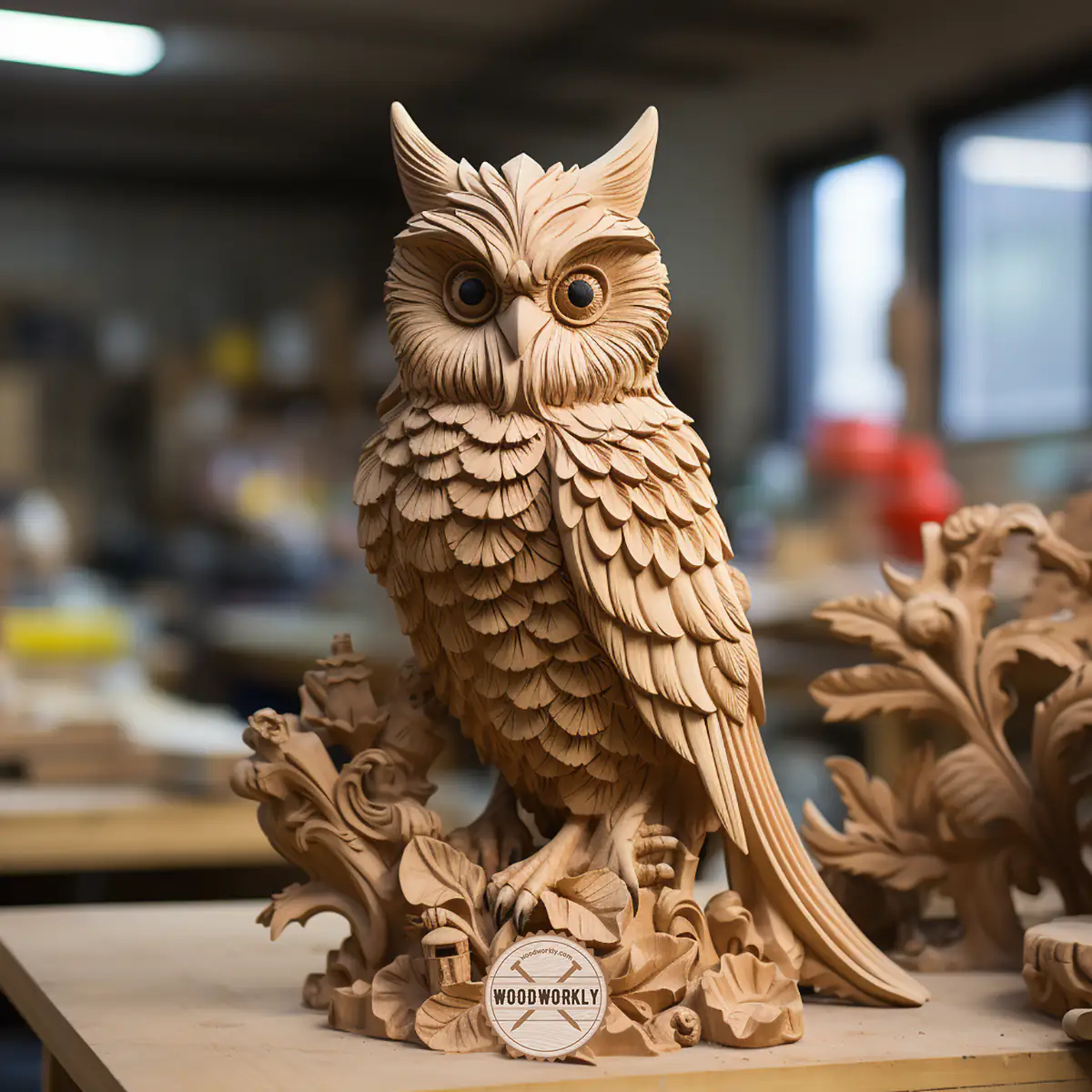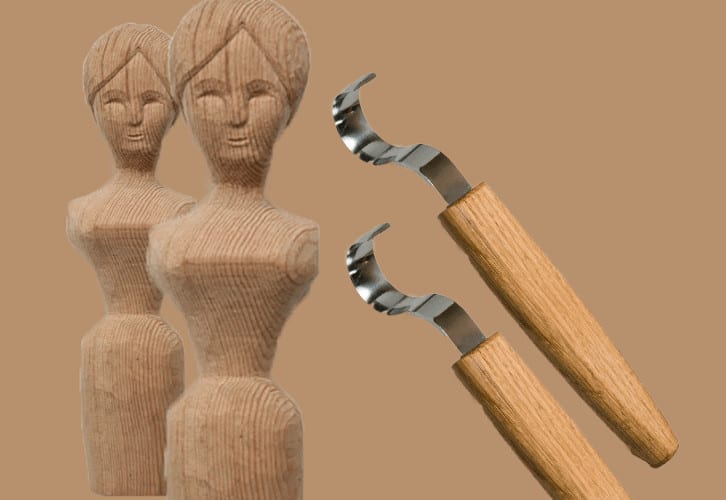When it comes to wood carving, you might be wondering, “Is pine good for wood carving?” Well, you’ve come to the right place! In this article, we’ll explore the suitability of pine for wood carving and provide you with all the information you need to know. So, let’s dive in and discover the exciting world of pine carving!
Carving has always been a fascinating craft, allowing artists to transform blocks of wood into magnificent creations. But is pine the right choice for your carving project? We’ll uncover the characteristics of pine that make it a popular option for wood carving enthusiasts. From its accessibility to its unique grain patterns, pine has its own charm in the carving world.
If you’re eager to explore the possibilities of wood carving and are curious about pine as a carving material, keep reading! We’ll guide you through the ins and outs of using pine for your carving endeavors. So, let’s embark on this creative journey and find out if pine is indeed good for wood carving!
When it comes to wood carving, pine is a popular choice for beginners and experienced woodcarvers alike. Its softness allows for easy carving and shaping, making it great for intricate designs. Pine also has a beautiful grain pattern that adds character to your carvings. However, it’s important to note that pine is a softer wood, so it may not be suitable for projects that require durability. Consider the specific requirements of your wood carving project before deciding if pine is the right choice for you.

Is Pine Good for Wood Carving?: Exploring the Potential of Pine Wood
Wood carving is a popular craft that allows individuals to transform blocks of wood into intricate, artistic pieces. One question that frequently arises in the realm of wood carving is whether pine wood is suitable for the craft. In this article, we will explore the characteristics of pine wood, its advantages and disadvantages for wood carving, and provide tips for carving pine wood effectively.
Characteristics of Pine Wood
Pine wood is a softwood that is widely available and affordable, making it a popular choice for various woodworking projects. It is known for its light color, straight grain, and relatively low density. Pine wood also has a distinctive aroma that can add to the overall appeal of a finished wood carving. Its relatively low cost and easy availability make it an attractive option, especially for beginners.
Advantages of Carving Pine Wood
Carving pine wood comes with several advantages that make it a viable choice for wood carving projects. Firstly, the softness of pine wood allows for easier carving, especially for beginners who may not yet have developed the strength and technique required for harder woods. The open grain structure of pine also allows for intricate detailing and the creation of realistic textures. Additionally, the lower density of pine wood makes it lighter, which can be beneficial for larger or more delicate carvings.
Another advantage of pine wood is that it is relatively inexpensive compared to hardwoods, making it a cost-effective option for those on a budget. The availability of pine wood is also a plus, as it can be found in most major hardware stores, making it easily accessible for aspiring woodcarvers. Pine’s light color and straight grain can also enhance the final appearance of a carving, allowing for beautiful staining or painting.
Disadvantages and Considerations
While pine wood has its advantages, it is important to consider its limitations and potential disadvantages for wood carving. One main drawback is that pine wood is relatively soft, which means that it may be more prone to denting or damage compared to harder woods. This can be a concern when working on intricate carvings or projects that require durability.
Additionally, the softness and open grain structure of pine wood can make it more susceptible to splintering or tearing while carving. It is important to use sharp tools and approach the wood with care to avoid any accidents or unwanted damage. Another consideration is that pine wood may not hold fine detail as well as harder woods, which can limit the level of intricacy achievable in certain carving projects.
Effective Techniques for Carving Pine Wood
When working with pine wood, there are several techniques and tips that can help ensure successful results.
Sharp Tools:
Using sharp carving tools is crucial when working with pine wood. Dull tools can lead to tear-outs and rough surfaces. Regularly sharpen and maintain your tools to achieve clean and precise cuts.
Grain Orientation:
Understanding the grain orientation of the pine wood is important to avoid splintering and tear-outs. Carving against the grain can lead to damage, while carving with the grain produces smoother cuts.
Test Carving:
Before diving into your main project, consider doing a test carving on a scrap piece of pine wood. This allows you to familiarize yourself with the wood’s characteristics and make adjustments to your carving techniques if necessary.
Simple Designs:
Pine wood may not hold extremely intricate details as well as harder woods, so it is advisable to start with simpler designs when carving in pine. Gradually progress to more complex projects as you gain experience and confidence.
Finishing:
Once your carving is complete, consider applying a protective finish to the pine wood to enhance its appearance and durability. This can be a clear varnish, wax, or any other appropriate finishing product.
Pine wood can indeed be a suitable choice for wood carving, especially for beginners and those on a budget. Its softness, affordability, and availability make it a desirable option, while its straight grain and light color can enhance the final result. By understanding its characteristics and implementing effective carving techniques, you can create beautiful and impressive wood carvings using pine wood.
Key Takeaways: Is Pine Good for Wood Carving?
- Pine is a good choice for beginner wood carvers.
- It is a softwood that is easy to carve and shape.
- Pine has a beautiful grain pattern that adds character to carvings.
- However, pine may not be suitable for intricate or detailed carvings.
- While it is affordable and readily available, pine is less durable compared to hardwoods.
Frequently Asked Questions
Welcome to our FAQs section, where we answer your burning questions about wood carving with pine! Whether you’re a seasoned woodcarver or just starting out, we’ve got the answers you’re looking for. Read on to learn more!
1. What are the advantages of using pine for wood carving?
Pine is a popular choice for wood carving for several reasons. First, it is relatively soft compared to other woods, making it easier to carve and shape. This is especially beneficial for beginners who are just getting started with wood carving. Secondly, pine has a consistent grain pattern, which means it is less likely to splinter or chip while carving. Lastly, pine is readily available and affordable, making it an accessible wood for many woodcarvers.
However, it’s important to note that pine can be prone to dents and scratches due to its softness. Additionally, its soft nature may not be ideal for intricate and detailed carvings, as it may not hold fine details as well as harder woods. Overall, pine is a great wood to work with for beginners or for larger, more rustic projects.
2. Are there any disadvantages to using pine for wood carving?
While pine has its advantages, it also has a few disadvantages for wood carving. One drawback is its softness, which makes it more prone to damage and wear over time. This means that carvings made with pine may require more maintenance and care compared to carvings made with harder wood species.
In addition, pine has a tendency to absorb moisture, which can cause it to warp or change shape. This can be problematic if you’re working on a piece that requires precise measurements or if you live in a humid climate. To mitigate this issue, it’s important to properly seal and protect pine carvings with a suitable finish.
3. Can I achieve fine details with pine wood carving?
While pine is generally softer and may not hold fine details as well as harder woods, it is still possible to achieve some level of detail in your pine wood carvings. With the right tools and techniques, you can create beautiful and intricate designs on pine wood. However, it’s worth noting that you may need to be more cautious and patient when working with pine to avoid any accidental damage to delicate areas.
If you’re specifically aiming for intricate details, you may want to consider using harder woods like walnut or cherry, which are known for their ability to hold fine details with precision. Ultimately, it depends on your skill level, the tools you have, and the specific project you’re working on.
4. How should I prepare pine wood for carving?
Before you start carving pine wood, it’s important to properly prepare the wood to ensure the best results. One crucial step is to remove any bark or outer layers to expose the clean wood beneath. This can be done using a sharp knife or a specialized debarking tool.
Next, you’ll want to carefully plan and mark your design on the wood. This will help guide your carving process and ensure you achieve the desired shape and proportions. It’s also a good idea to consider the wood grain and incorporate it into your design, as this can enhance the overall look of your carving.
5. What tools are best for carving pine wood?
When carving pine wood, it’s important to have the right tools for the job. Some essential tools for pine wood carving include carving knives, gouges of various sizes and shapes, and a mallet. These tools will allow you to remove wood efficiently and shape it according to your design.
Additionally, it’s important to have sharp tools, as pine wood can be prone to splintering. Regularly sharpening your carving tools will help you achieve clean and precise cuts. It’s also a good idea to have sandpaper or files on hand to smooth out any rough areas or refine the details of your carving.

My Top 5 Favorite Carving Woods
Summary
Pine wood is great for carving because it is soft, easy to work with, and has a straight grain. It is also affordable and widely available. However, it is not the best choice for intricate and detailed carvings due to its tendency to splinter and chip. So, if you’re a beginner or looking to create simpler designs, pine is a good option.
Remember to use the right tools, like sharp knives and gouges, to prevent accidents and produce clean cuts. Don’t forget to finish and seal your pine carving to protect it from moisture and decay. Overall, pine is a versatile wood that can be a fantastic choice for wood carving projects, especially if you keep its limitations in mind.
